피드 파일이 준비되면 안전한 위치에 호스팅하세요. Google은 콘텐츠가 최신 상태로 유지되도록 정기적으로 피드를 가져옵니다(일반적으로 하루에 한 번). Google 담당자와 협력하여 호스팅 세부정보와 호스팅된 위치에서 피드를 가져오는 가장 좋은 시간을 공유합니다.
피드 호스팅 권장사항
피드를 호스팅하는 가장 좋은 방법과 호스팅된 위치에서 피드가 구성되는 방식은 데이터 제공업체의 재량에 따르지만, 원활한 가져오기를 위해 피드를 구성하는 방법에 관한 몇 가지 권장사항을 소개합니다.
- 'latest'라는 폴더를 만듭니다(대소문자 구분 안 함). 이 폴더는 매일 JSON 피드 파일로 업데이트되며 Google이 특정 시점에 가져와야 하는 파일만 포함되어야 합니다.
- 최신 폴더 아래에 하위 폴더를 만들지 마세요. 계층 구조를 단순하게 유지합니다. 즉, 모든 JSON 파일이 '최신' 폴더 바로 아래에 있어야 합니다.
- 원하는 경우 'date-time'이라는 이름의 폴더에 지난 30일간의 피드를 저장하도록 선택할 수 있습니다. 이는 이전 버전의 피드에 문제가 있거나 이전에 제공된 메타데이터를 조회해야 하는 경우에 유용합니다. Google은 이러한 폴더를 어떤 방식으로도 사용하지 않습니다.
- '최신' 폴더에 크기가 0KB인 파일/빈 파일이 없어야 합니다.
- 파일을 원활하게 가져올 수 있도록 Google이 항상 '최신' 폴더에 액세스할 수 있는지 확인합니다.
- Google에서 스테이징 피드를 요청하는 경우 스테이징 피드를 호스팅할 별도의 폴더를 만들어야 합니다. 예를 들어 프로덕션 피드의 계층 구조가 ../latest/인 경우 스테이징 피드에 다른 계층 구조(예: ../staging/latest/)를 만들 수 있습니다.
호스팅 방법
아래 표에는 지원되는 피드 호스팅 방법과 Google 담당자와 공유해야 하는 세부정보가 나와 있습니다.
| 메서드 | 세부정보 필요 | 인증 지원 |
| Google Cloud Storage(GCS) |
|
|
| HTTPS |
|
|
| SFTP |
|
|
| AWS S3 |
|
|
위 방법 중 하나를 사용하여 피드 파일을 업로드한 후 미디어 작업팀에 연락하여 피드 파일을 검토해 달라고 요청하세요.
Google Cloud Storage에 피드 호스팅
다음 단계에서는 Google Cloud Storage에 피드 파일을 업로드하는 방법을 보여줍니다.
Google Cloud Platform 콘솔에 로그인하고 프로젝트 선택 드롭다운 메뉴를 클릭합니다.

팝업 창에서 새 프로젝트를 클릭합니다.

새 프로젝트의 이름을 지정하고 만들기를 클릭합니다.
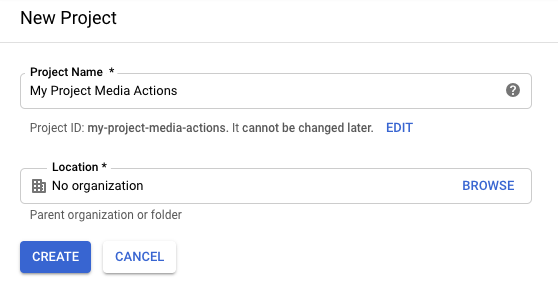
탐색 메뉴에서 Storage > Browser를 클릭합니다.
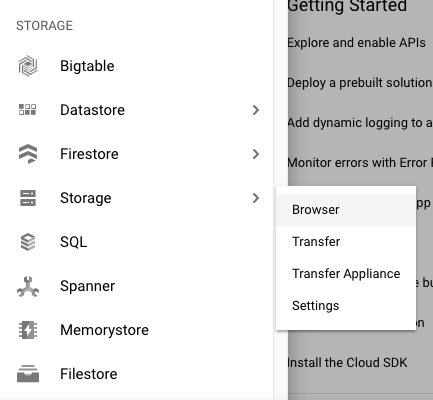
아직 Google Cloud Storage에 가입하지 않았다면 무료 체험 가입을 클릭하여 무료 체험을 시작하세요. 청구 기준액에 도달하거나 30일이 지난 후에만 이 서비스 요금이 청구됩니다.
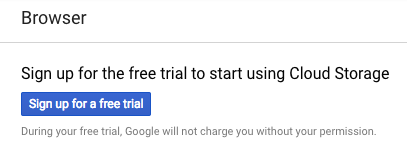
무료 체험판에 가입한 후 브라우저를 새로고침하여 화면을 업데이트합니다.
버킷 만들기를 클릭합니다.
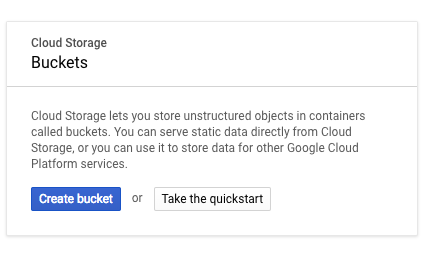
버킷 이름을 지정하고 만들기를 클릭합니다.

버킷 세부정보 페이지에서 파일 업로드를 클릭합니다.

피드 파일을 업로드합니다.

버킷 세부정보 페이지에서 권한을 클릭합니다.

회원 추가를 클릭합니다.
새 구성원 필드에 다음 이메일 주소를 입력합니다.
088794101-100000002-account@partnercontent.gserviceaccount.com드롭다운에서 Storage Object Viewer를 선택하고 저장을 클릭합니다.
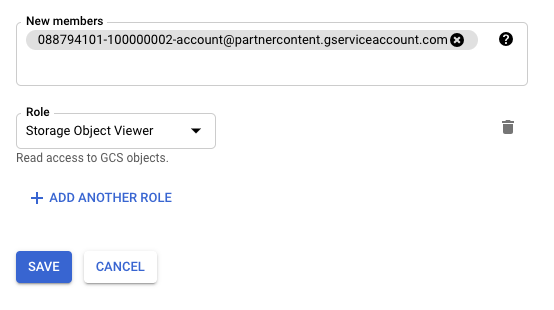
피드 파일을 호스트 시스템에 업로드한 후 Media Actions팀에 문의하여 피드 파일을 검토합니다.
